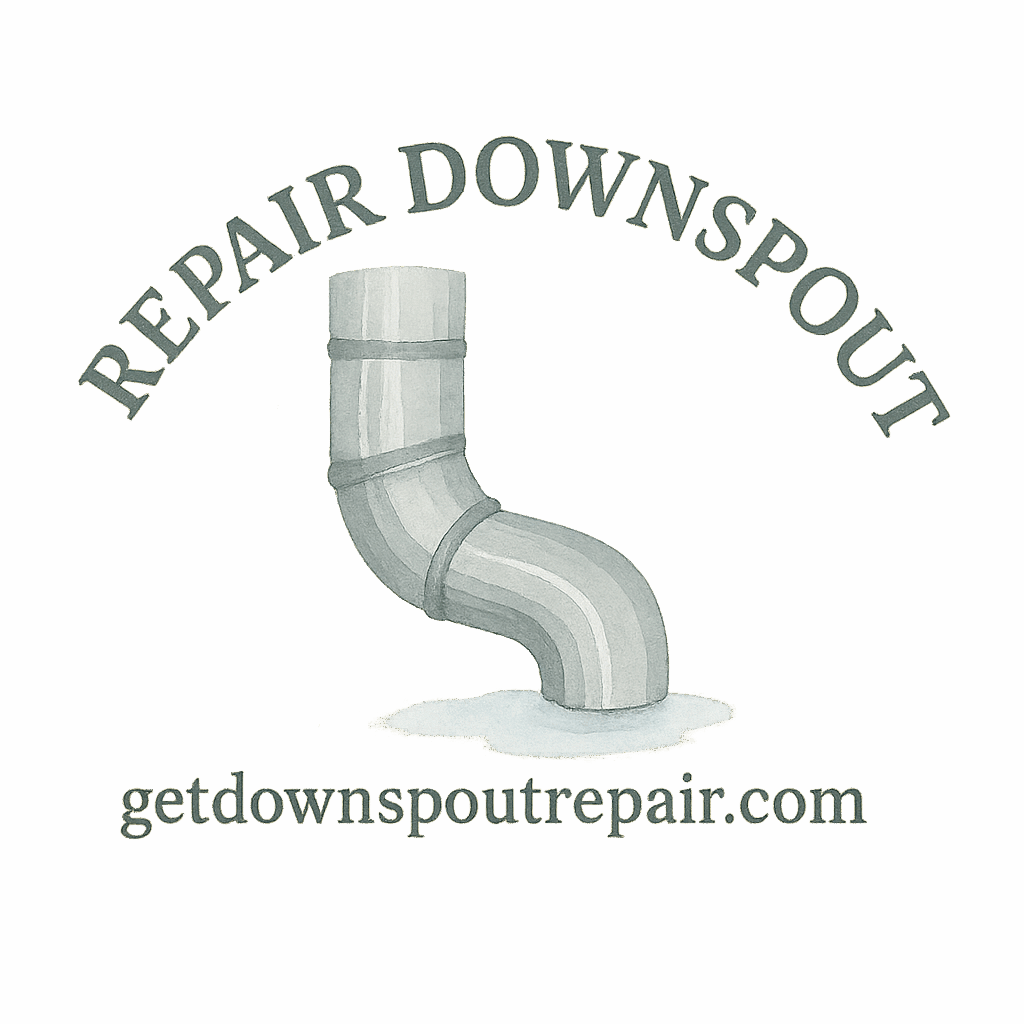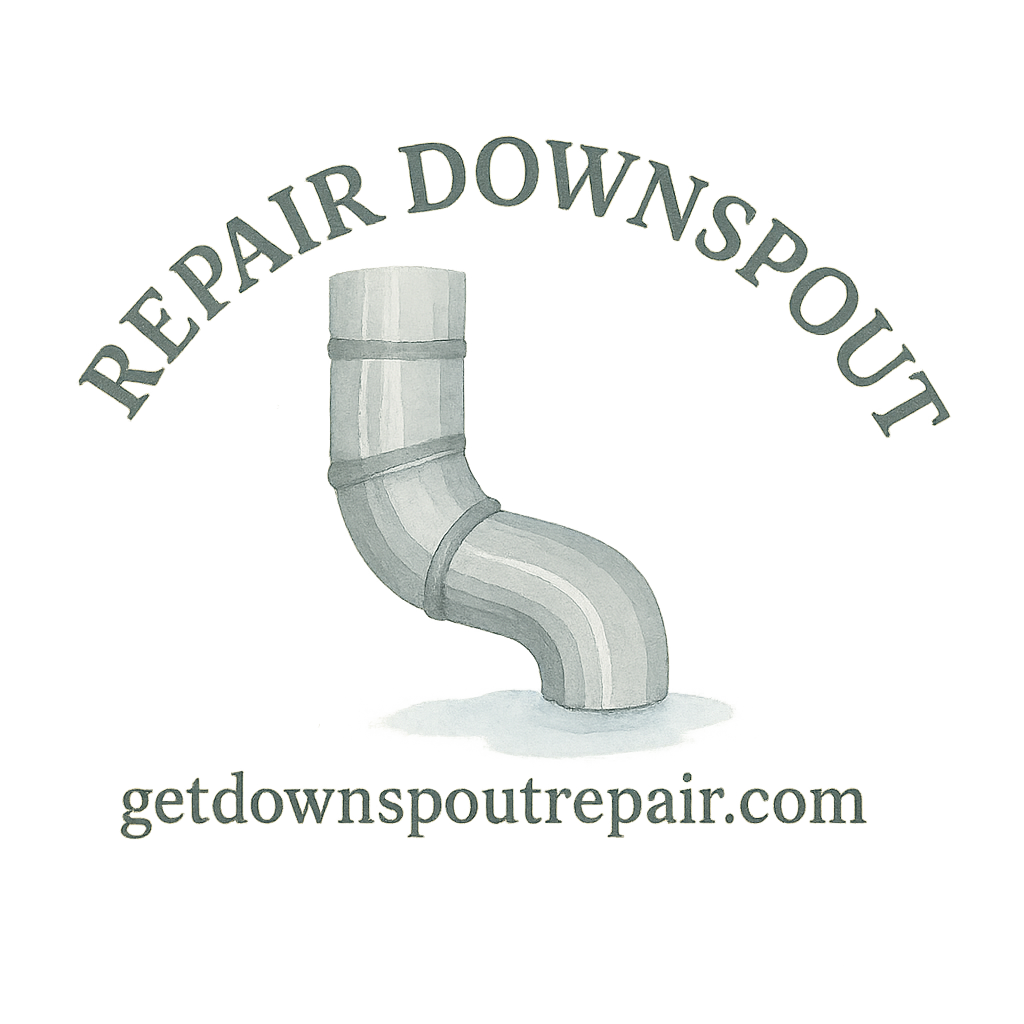Introduction: Why Downspout Repairs Matter
Ever noticed water spilling over your gutters like a mini waterfall during heavy rain? That’s not just annoying—it’s a sign your downspout system needs attention. Left unchecked, overflowing gutters can damage your foundation, landscaping, and even your home’s siding. The good news? You don’t always need to hire a contractor. With the right tools, knowledge, and a little effort, you can tackle many repairs on your own.
In this guide, we’ll walk through 8 DIY downspout repair solutions that are practical, budget-friendly, and easy enough for beginners.
Understanding the Causes of Overflowing Gutters
Before fixing anything, it’s crucial to understand why gutters overflow in the first place.
Common Downspout Problems
- Clogged Downspouts – Leaves, twigs, and debris block water flow.
- Detached Downspouts – Loose fasteners cause water to leak where it shouldn’t.
- Cracks and Holes – Small leaks lead to bigger water damage if ignored.
- Improper Slope – If the angle is wrong, water pools instead of draining.
Learn more about the basics here: Downspout Repair Guide.
Signs You Need Immediate Repair
- Pools of water near your foundation.
- Mold or mildew on siding.
- Watermarks under eaves.
- Sagging gutters pulling away from the house.
If you spot these, it’s time to act quickly to prevent costly repairs.
Essential Tools and Materials for DIY Downspout Repair
Must-Have Repair Tools
According to DIY Tools for Downspout Repair, here’s a checklist to keep handy:
- Screwdriver or drill
- Metal snips
- Gutter scoop
- Garden hose with spray nozzle
- Caulk gun
- Ladder
- Safety gloves
Budget-Friendly vs. Premium Tools
You don’t need the most expensive tools to get started. Check Budget Tips for Downspout Repair for cost-effective choices. That said, premium tools can save time and effort, especially for bigger projects.
Safety Precautions Before Starting Repairs
Ladder Safety
Always place the ladder on solid ground and never overreach. Use ladder stabilizers if possible.
Protective Gear
Gloves, safety goggles, and sturdy shoes are non-negotiable when handling sharp metal and wet debris.
8 DIY Downspout Repair Solutions for Overflowing Gutters
Now let’s dig into the practical fixes you can do today.
1. Clearing Downspout Clogs
A clogged downspout is the #1 reason gutters overflow. Use a garden hose to flush debris. For stubborn clogs, a plumber’s snake can work wonders. Learn more at DIY Fixes.
2. Fixing Loose or Detached Downspouts
Loose connections let water leak along the siding. Tighten screws or add new brackets.
3. Replacing Damaged Elbows
Elbows guide water at crucial angles. If cracked or dented, cut out the section with snips and replace it.

4. Sealing Leaks with Waterproof Caulk
Small cracks or seams can be sealed with exterior-grade caulk. Make sure surfaces are dry before sealing.
5. Installing Splash Blocks or Extensions
Extensions direct water further away from your foundation, reducing the risk of water damage.
6. Adjusting the Downspout Angle
If your downspout isn’t sloped properly, water will back up. Adjust brackets to create a gentle downward flow.
7. Patching Holes with Metal Flashing
Cut a piece of flashing slightly larger than the hole, secure it with roofing cement, and seal with caulk.
8. Adding a Gutter Guard for Preventing Clogs
Gutter guards minimize debris buildup, saving you from frequent cleaning. Explore prevent clogging solutions.
Preventing Future Downspout Issues
Seasonal Gutter Cleaning Tips
Clean your gutters at least twice a year, more if you live near lots of trees. See Gutter Cleaning Guide.
How to Prevent Clogging
Install mesh screens or gutter guards. Trim back overhanging branches to minimize leaf buildup.
When to Call a Professional
DIY vs. Pro Help: Knowing Your Limits
Some repairs, like full replacements or underground drainage issues, require expert help. Check Professional Downspout Help when the job feels overwhelming.
Cost Considerations for Downspout Repair
Budgeting Tips
DIY fixes often cost under $50 if you already own the tools. For more insights, see Downspout Costs and Materials.
Materials vs. Labor Costs
Hiring a licensed contractor (Licensed Contractor Guide) adds labor costs but may be worth it for complex issues.
Benefits of Regular Downspout Maintenance
Protecting Your Foundation
Redirecting water prevents cracks and soil erosion around your home’s base.
Avoiding Water Damage
Overflowing gutters can cause mold, rot, and even basement flooding. Regular maintenance is your best defense.
Learn about the benefits of upkeep.
Conclusion
Overflowing gutters don’t have to be a nightmare. With these 8 DIY downspout repair solutions, you can restore your drainage system, protect your foundation, and avoid costly water damage. The key is regular maintenance, quick fixes, and knowing when to call in the pros.
Ready to take action? Explore more expert guides at Get Downspout Repair.
FAQs
1. How often should I clean my downspouts?
At least twice a year—once in spring and once in fall.
2. Can I use duct tape to patch a leaking downspout?
Only as a temporary fix. Use metal flashing or caulk for a long-lasting repair.
3. Do gutter guards really work?
Yes, they help reduce clogs, though occasional cleaning is still needed.
4. What’s the best angle for a downspout?
A gentle slope of ¼ inch per 10 feet ensures proper water flow.
5. When should I replace instead of repair?
If rust, cracks, or detachment are widespread, replacement is more cost-effective.
6. Can overflowing gutters cause basement flooding?
Absolutely—improper drainage directs water toward your foundation.
7. Should I DIY or hire a pro for underground drainage issues?
Hire a pro. DIY is great for surface-level fixes, but underground systems need expertise.


